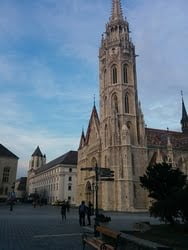 There will be a major exhibition on the history of the Matthias Church in Budapest in Budapest available until October 18th. The exhibition will take place in the Historical museum and in the Matthias church.
There will be a major exhibition on the history of the Matthias Church in Budapest in Budapest available until October 18th. The exhibition will take place in the Historical museum and in the Matthias church.
The Matthias Church is a Roman Catholic church located in the heart of the city in Buda’s Castle district right in front of the famous Fisherman’s Bastion. Matthias Church has a long history which dates back to the 13th century. During the centuries the church had a central role not only in the every day life of Buda but it gave home to the coronation of the Hungarian kings as well. At the exhibition visitors will have the chance to discover the rich history of the Matthias Church through the several exhibited objects, such as the furnitures, tools and clothes that were used in the Hungarian medieval era and visitors can also have a closer look on the secular importance of the church.
The exhibition on the history of Hungary and the Matthias Church will take place at the Matthias Church and the Budapest Historical Museum in Budapest which will be open until the 18th October 2015.
Budapest Historical Museum
Budapest, Szent György tér 2, 1014 Hungary
If you want to know more on exhibitions in Budapest, click here.
